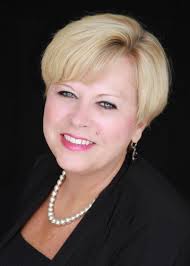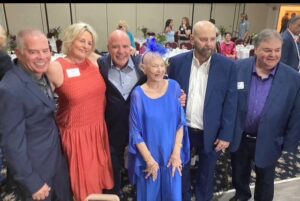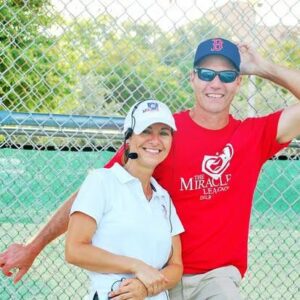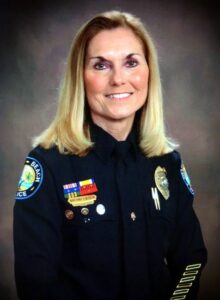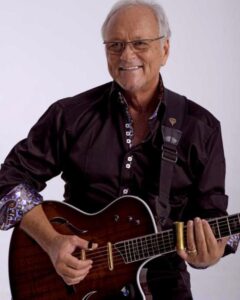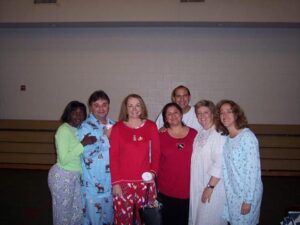
Granger’s Grille.
Note: This is an early version of the blog. I’m traveling to our nation’s capital next week on business and won’t be at my desk to write and post Monday. I hope you don’t mind the intrusion in your inbox.
I’m going to miss Granger’s.
The iconic restaurant on Federal Highway closed its doors last week with a sad sign off on Facebook thanking patrons for their loyalty.
I’d like to thank Granger’s for their grilled cheese, their turkey burgers and their home-made chips—which were unparalleled. Granger’s Grille felt like the Delray version of “Cheers”—a place where everybody knew your name. We need these kinds of places; in fact we crave them.
It was interesting to see the reaction to the surprise announcement. Lots of regulars expressed genuine sadness at the news and lamented the loss of yet another local staple—and a relatively affordable one at that. Across the border in Boca, I watched a similar reaction to the news that Belzers Hardware announced that it was closing after many decades. Locals talked about shopping at Belzers in the 50s.
We feel these losses somewhere deep in our souls. These places are what make us feel that we’re home.
As for me, I’m still mourning the closure of The Annex in Pineapple Grove—but the loss of Granger’s stings even more.
Granger’s was my “go-to”, an easy answer for lunch, a place where it was easy to park, the wait staff was friendly, and best of all you can always count on finding at least six other friends among the tables.
I was a frequent flier at Granger’s for years—first at their old location near Rex’s Hair Salon (also gone but never forgotten) and later at the new location which was spacious and featured easy and ample parking. I was there at least 1-2 times a week, even during Covid, when they were a great place to pick-up some tasty take-out.
I finally mastered the credit card machine, a considerable accomplishment for a tech luddite such as myself. And while I never made it to rib night, I had planned too. But alas that opportunity has passed unless of course they find a new location and get the band back together. (One can hope).
My friends in the restaurant business tell me times are tough for independent proprietors. Food costs are high, insurance is expensive, the workforce can’t afford to live here and rents are astronomical. There’s also an immense amount of competition. It can’t be easy to fill seats on Tuesday and Wednesday nights, and the summers are long, hot and devoid of snowbirds. It’s hard to know when and if our friends from Canada will return; who can blame them.
But all I know is that places like Granger’s are important.
Life is funny, you never know when your last time doing (fill in the blank) will be. We remember the first times, but we often don’t recognize last times.
My “last time” at Grangers was two weeks ago when I had a chance to have lunch with the legendary Tony Allerton and the soon to be legendary Steve English.
Tony is a long-time friend. He’s a local icon who has literally saved thousands of lives through his work at The Crossroads Club.
Tony is in his 90s now, sharp as a tack and still working.
We share a lot of history and a love for Granger’s, what I call a “great, good place” —a phrase I’m borrowing from Ray Oldenburg.
Mr. Oldenburg is gone now. But he made a great and lasting contribution to our culture. He was an urban sociologist who coined the term “third place” to describe the importance of informal gathering spaces—coffee shops, parks, bookstores, cultural venues and the like.
First place is the home, second place is the workplace, and third places are the anchors of community life where we find connection and community.
They are important civic assets.
Oldenburg’s ideas remain influential, and the best cities embrace his “Third Place” philosophy by encouraging and supporting these gathering spots.
According to experts, there are several characteristics of a third place.
A third place accepts people from all walks of life.
Conversation is the focus.
They are accessible and accommodating.
There are regulars who hang out.
They tend to be low profile.
They are playful, fun and casual.
They are “a home away from home.”
Granger’s ticked most if not all those boxes.
Sadly, third places are declining.
We don’t go to the movies anymore, we don’t join bowling leagues like we used to do and service clubs are struggling to attract young members.
We do play pickleball, so that’s a plus.
Anyway, Grangers was a great, good place. I sure hope they find another location. But if they don’t, I will cherish the memories. I’m already wistful when I drive by….
This week, I was honored to eulogize my friend Nancy Stewart-Franczak, who passed away recently. A huge crowd turned out on a rainy night at the Delray Beach Golf Club to pay tribute to a woman who meant so much to so many. Nancy’s loss leaves a huge void in the lives of her husband, her family, her friends, work colleagues and the communities she served with her outstanding special events.
I got several requests to share my remarks so here they are…
Delray Beach has lost a true friend.
There are no words to adequately describe what Nancy meant to her family, her friends, her community.
We loved her.
She loved all of us, touched all of us, inspired all of us and led by example.
She was tough and soft. Resilient and loving. Determined and sensitive. She was fun and funny, warm and wise.
She put this town on the map with her vision and grit. She was a force —full of ideas and the rare visionary who not only dreamed big but had the skill to execute on those dreams.
She made so much happen. So much. It’s staggering what she accomplished with a small but powerful team. But she was always humble. Always willing to listen and always open to new things. Nancy never stopped growing. She never stopped learning, and she never stopped dreaming. She set an example for all of us.
I’ve had a few days to reflect on my friend Nancy and I’m left with a bunch of emotions: I feel deep sadness over this loss, I’m in awe of her legacy and like you I’m absolutely heartbroken. We were not prepared to let Nancy go… Somehow, we thought that Nancy was indestructible.
But while she is no longer here with us, she will always be with us in spirit. And the seeds she planted, the dreams she realized, will long endure.
She touched so many, so deeply. And I think I know why.
It’s because she was genuine.
In a fast-moving transactional world, our Nancy was real and rooted.
She wore her passion on her sleeve, spoke her mind and loved this place. She loved Delray Beach, even when the powers that be didn’t love her back.
What I’ve seen in the past few weeks is a tremendous outpouring of love from people in this community that Nancy touched. They never went away. They never left her side. Nancy’s community never left her. And she never left our side either. She never stopped taking pride in a community she helped to build.
I saw Nancy weather a lot in recent years. Illness. Pain. Toxic politics.
I debated whether to mention what Nancy and her team at FMG went through relative to the Garlic Fest.
But I think the story is essential to Nancy’s story and a testament to her strength and character.
It’s also a teachable moment. And it has a happy ending because after 9 years, Garlic Festival is coming back. And Nancy knew that. Her pride and joy is coming back to Delray; where she wanted it to be, and where it belongs.
I was mayor when Nancy asked me and Diane, then the CRA Director to travel with her to Gilroy California to show us what a Garlic Festival can mean to a community.
She wanted me to see her vision. She was going to build a festival that gave back to Delray. And she did. Because when Nancy set out to do something it got done.
When the powers that be sent her away, she stood her ground. She told her story. She stood up and spoke truth to power.
It was during this time that we grew closer. Being forced to take Garlic Festival to a new location was hard for Nancy and her team. But they made it work, and the festival grew. But she never gave up on bringing it home.
This is where we saw Nancy’s strength. We saw her faith. Her ability to pivot like all great entrepreneurs and her ability to reinvent and grow her business with other signature events.
She led by example, and she set an example.
When our community learned of Nancy’s passing, we saw a tremendous outpouring of love and respect.
Words like icon, visionary, resilience and kindness were used to describe Nancy.
I can add many: honest, loving, passionate and courageous are just a few that come to mind. Nancy was something else; she was truly remarkable.
I hope we have learned to appreciate and respect these special people in our midst. That’s the teachable moment.
Cities are cities. It’s the special people who show up, roll up their sleeves and get to work that make them special. It’s people like Nancy who make our hometowns feel like home.
Nancy’s life was devoted to building community, she benefited several cities in the area but none more than Delray.
We need to cherish people like Nancy. The people in this room certainly do. We need to insist that the visionaries in our midst are treated with grace and compassion. That’s what makes or breaks a village. Nancy knew that. She got up every day and worked hard to strengthen the village. And she succeeded. With kindness, humor and a fierce determination that made her uniquely our Nancy.
I’ll conclude by saying that I felt very close to Nancy. She was easy to talk to; we laughed together and cried a few times too. She was a loyal friend. A trusted confidant and someone I deeply respected. I loved her. We all did.
Her memory will be a blessing to all of us…she’ll live forever in our hearts.
Last week, during a visit to Maine, I had a dream. I dreamt that I was in a storm with winds so strong that bricks were flying.
In the dream, I was dodging the bricks.
When I awoke, I thought about the dream and what it may have meant.
I think I figured it out, I was listening to a song the day before by Willie Nelson, it’s called “It’s Open Season on my Heart.” There’s a line in the song that I think may have prompted my dream. Here’s the line.
The days go by like flying bricks
Leave gaping holes too deep to fix.
When we reach a certain stage of life, we start to lose people who are essential to us.
Every day the bricks are flying and sometimes they hit us and leave gaping holes too deep to fix.
Losing Nancy leaves a gaping hole to deep to fix. But while the loss hurts, we wouldn’t trade a moment, because the love we’ve experienced transcends the loss.
To Nancy’s husband John, I’m so sorry for your loss. You’ve shared with me your faith that she is with G-d. We wish you peace during this difficult time.
To Nancy’s family. Thank you for sharing Nancy with us. She enriched our lives immensely.
To Nancy’s family at FMG…I know how hard this has been for you. I hope you feel the support of an appreciative community who very much want you to continue Nancy’s remarkable work. We love the FMG team. And we love Nancy…

